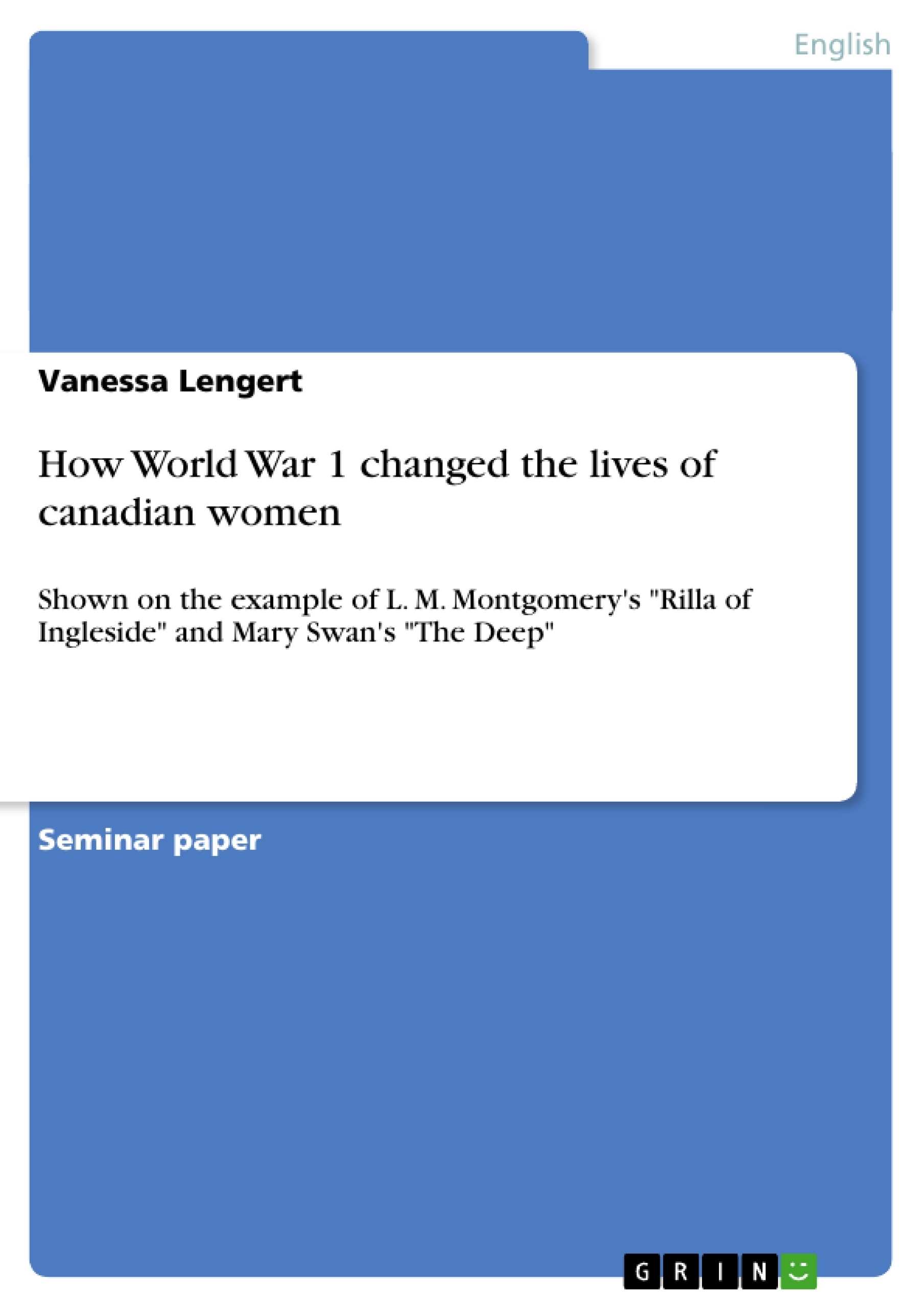War always has a great influence on a country and the people that fight in it. This was also the case for Canada, when England declared its entrance into World War 1 in August, 1914 .
Thousands of men enlisted during the first days of war, ready to fight and die for their homeland and what they thought to be a better world. Of course this meant a dramatic change in life for them. Leaving behind family and work, not knowing whether one would live to see Canada again.
orce on the men of a country, but most often women are affected just in the same way. This is also the case for Canada during World War 1. Women in those days had to face all kind of problems they were not used to by this time. They found themselves fear about the beloved ones and in psychological conflicts on what they could do to support their homeland. Some decided to work at the home fronts, while others wishing to be close to the battlefield, decided to follow their men overseas. In addition to such mental conflicts, a family had to be financed, and a country`s economy had to be kept stable. So, one could argue that women lives also underlay enormous changes under the influence of World War 1.
Inhaltsverzeichnis (Table of Contents)
- Introduction
- Canada and World War 1
- Women at home during World War 1
- Rilla of Ingleside by Lucy Maud Montgomery
- How World War 1 changed Rilla`s world
- Women at the front during World War 1
- The Deep by Mary Swan
- How World War 1 changed the twins` lives
- Comparison
- How World War 1 changed the lives of Canadian women in general
- Canadian women before World War 1
- Canadian women during World War 1
- Canadian Women after World War 1
- Conclusion
Zielsetzung und Themenschwerpunkte (Objectives and Key Themes)
This paper examines the impact of World War 1 on Canadian women and their roles during this period, using Lucy Maud Montgomery's "Rilla of Ingleside" and Mary Swan's "The Deep" as case studies. The paper aims to provide a nuanced understanding of the experiences of Canadian women during the war, both at home and at the front, and to explore how these experiences influenced their lives.
- The impact of World War 1 on Canadian women's lives
- The contrasting experiences of women at home and at the front
- The role of literature in reflecting the changing realities of women's lives
- The contributions of women to the war effort
- The enduring legacy of World War 1 on Canadian women's rights and identities
Zusammenfassung der Kapitel (Chapter Summaries)
The paper begins by providing a historical overview of Canada's involvement in World War 1 and the societal and economic changes that resulted. The paper then explores the experiences of women at home, focusing on Rilla of Ingleside. It analyzes how Montgomery's novel portrays the challenges and adjustments faced by women during the war, highlighting their roles in supporting the war effort through volunteer work and maintaining the home front.
The paper then shifts its focus to women at the front, using Mary Swan's The Deep as a case study. The chapter explores how the novel depicts the experiences of women who chose to serve in the war effort, highlighting their contributions to the war effort and the challenges they faced.
The paper continues by comparing and contrasting the experiences of women at home and at the front, further deepening the analysis of the impact of World War 1 on Canadian women's lives.
Schlüsselwörter (Keywords)
This paper focuses on the impact of World War 1 on Canadian women's lives, examining their roles in the war effort, their experiences both at home and at the front, and the lasting effects of the war on their rights and identities. It also delves into the use of literature to reflect and analyze these experiences, drawing on the works of Lucy Maud Montgomery and Mary Swan.
- Quote paper
- Vanessa Lengert (Author), 2006, How World War 1 changed the lives of canadian women, Munich, GRIN Verlag, https://www.grin.com/document/78227



